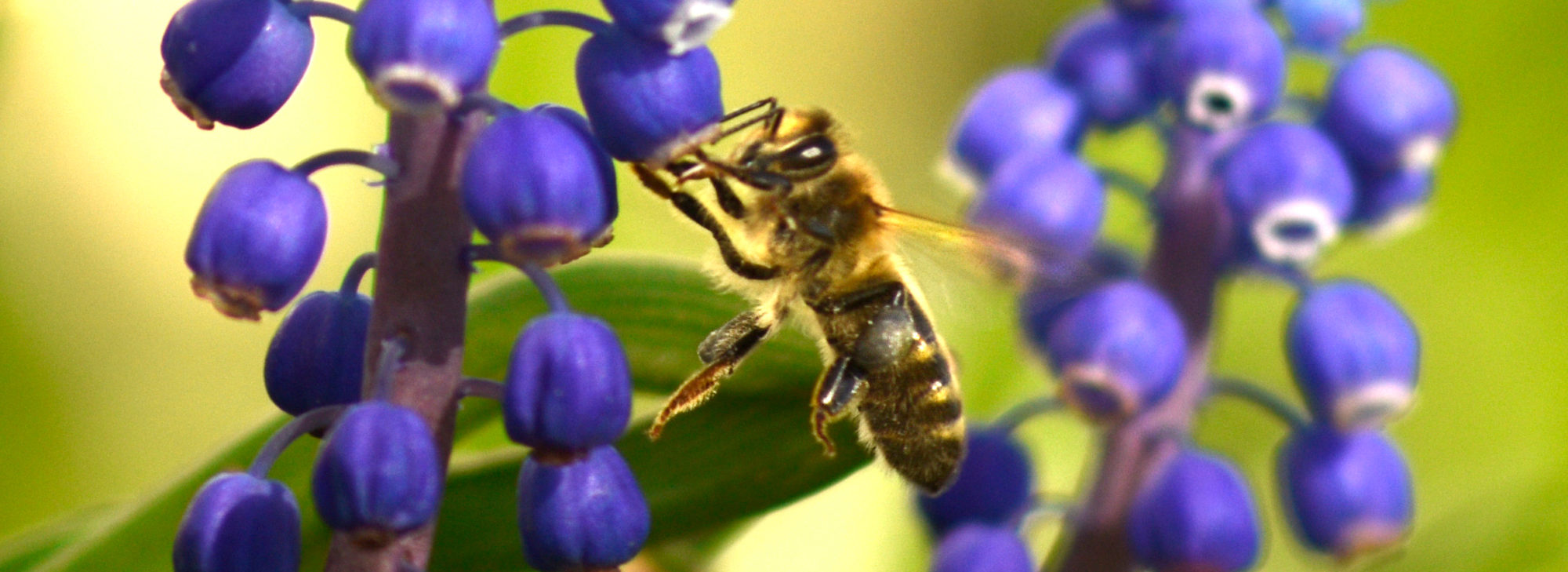Honeybees may be the most well-known and well-loved pollinator. Did you know, just like the apple, the modern honeybee is not originally from North America? While the honeybee may not be considered an invasive species, it can cause some of the same stressors for native species as invasive species. According to the US Department of Agriculture, an invasive species can outcompete the native species for food and habitats and sometimes even cause their extinction. There are some who argue honeybees have negatively impacted native bees in North America through disrupting pollination systems.
The mason bee and the classic bumblebee are two examples of over 4000 species of bees native to North America. These and most other native bees are solitary bees, meaning they live alone rather than in a colony the way honeybees do. Native bees are usually found at specific times of the year depending on the species. For example in Spring and early summer, you can often spot the bumblebee out gathering nectar and helping to pollinate fruits such as apples.
At the same time of year, you can also see mason bees. Mason bees remind me of an excited toddler, moving quickly from flower to flower, and making a mess of the pollen in the process. By doing this, mason bees are actually much more efficient pollinators than honeybees. Honeybees are more efficient at gathering pollen since they have pollen baskets (corbiculae). Since the mason bees are solitary, gathering 20,000 mason bees to pollinate is not as feasible as using honeybees.
Native bees and honeybees can be helped much the same way. There are many pollinator-friendly plants that can be planted. Whether you have a tiny space and only one pot to plant in or 5 acres you want to plant, there is something you can do to help. Below are plants listed by season that can help a variety of pollinators near you, remember bees can forage up to five miles looking for nectar and pollen.

Spring
Crocuses
Strawberries
Pansies
Phlox
Penstemon (not NY native)

Summer
Aster
Bee balm (also deer resistant!)
Black-eyed Susan
Cone flowers
Cosmos
Goldenrod
Penstemon
Phlox
Zinnias

Fall
Goldenrod
Phlox
Zinnias
Pansies
Sedum (super easy to grow)
Finally, consider reseeding bare areas in your yard with clover. Clover is a regular source of food for bees and other pollinators from Spring through Fall remains low to the ground for less lawn maintenance and is drought tolerant.

